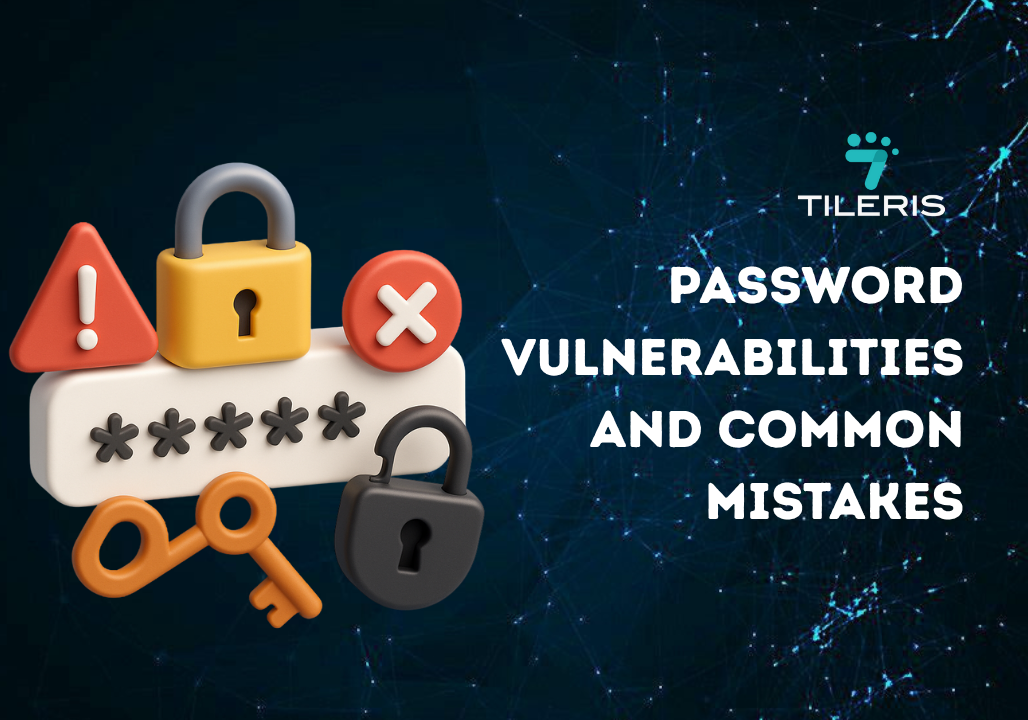Password Vulnerabilities And Common Mistake
Introduction
Password vulnerabilities is one of the most critical security threats facing individuals and organizations worldwide. Understanding password mistakes and their implications is essential for maintaining robust cybersecurity defenses. Password vulnerabilities continue to be exploited by cybercriminals, leading to billions of dollars in losses annually and compromising sensitive personal and corporate data. This comprehensive analysis explores the multifaceted nature of password mistakes, examining both technical vulnerabilities and human factors that contribute to security breaches.
The prevalence of password vulnerabilities stems from fundamental weaknesses in how passwords are created, managed, and implemented across various systems. Common password mistakes range from simple user errors to complex systemic failures in password policy implementation. As cyber threats evolve, understanding these vulnerabilities becomes increasingly crucial for cybersecurity professionals, system administrators, and end users alike.
The Structure of Password Vulnerabilities
Weak Password Construction
Password vulnerabilities often originate from poor password construction practices. The most common password mistakes include using dictionary words, personal information, or predictable patterns. Research in cybersecurity demonstrates that approximately 80% of data breaches involve weak or compromised passwords, highlighting the critical nature of this vulnerability.
Weak passwords typically exhibit several characteristics that make them susceptible to various attack vectors. These include insufficient length, lack of character diversity, and predictable patterns. Password vulnerabilities in this category are particularly dangerous because they can be exploited using automated tools and techniques that require minimal technical expertise.
Dictionary and Brute Force Attack Susceptibility
One of the most significant password vulnerabilities involves susceptibility to dictionary and brute force attacks. Password mistakes in this category include using common words, phrases, or patterns that appear in password dictionaries. Cybersecurity experts consistently identify these vulnerabilities as primary entry points for attackers.
Dictionary attacks exploit password vulnerabilities by systematically testing common passwords and variations against user accounts. These attacks target password mistakes such as using common substitutions (@ for a, 3 for e) or adding simple numerical sequences to dictionary words. The effectiveness of these attacks underscores the importance of understanding and mitigating such password vulnerabilities.
Credential Reuse and Password Recycling
Password vulnerabilities extend beyond individual password strength to encompass usage patterns across multiple systems. One of the most dangerous password mistakes involves reusing identical or similar passwords across multiple accounts. This practice amplifies the impact of any single password breach, creating cascading security failures.
Credential reuse represents a systemic password vulnerability that affects both personal and enterprise security. When users commit this password mistake, a single compromised account can lead to widespread unauthorized access across multiple platforms and services. Cybersecurity frameworks consistently identify credential reuse as a critical vulnerability requiring immediate attention.
Technical Password Vulnerabilities
Hash Function Weaknesses
Password vulnerabilities often stem from inadequate cryptographic implementations in password storage systems. Many organizations commit critical password mistakes by using outdated or weak hashing algorithms without proper salting mechanisms. These technical password vulnerabilities can be exploited even when users create strong passwords.
Modern cybersecurity standards recommend using bcrypt, scrypt, or Argon2 for password hashing to reduce these vulnerabilities. Organizations that fail to implement proper password hashing commit serious password mistakes that can compromise their entire user base. Understanding these technical password vulnerabilities is crucial for system administrators and security professionals.
Insufficient Salt Implementation
Salting is a critical defense against password vulnerabilities, yet many systems exhibit password mistakes in salt implementation. Inadequate salting creates password vulnerabilities that enable rainbow table attacks and accelerate password cracking attempts. Proper salt implementation requires unique, randomly generated salts for each password to prevent these vulnerabilities.
Password mistakes in salt implementation include using static salts, short salts, or predictable salt generation methods. These password vulnerabilities can be exploited by attackers who gain access to password databases, significantly reducing the time required for password cracking operations.
Transmission Security Failures
Password vulnerabilities frequently occur during password transmission between client and server systems. Common password mistakes include transmitting passwords over unencrypted connections or using inadequate encryption protocols. These vulnerabilities expose passwords to interception attacks and man-in-the-middle exploits.
Cybersecurity best practices mandate using HTTPS with proper SSL/TLS implementation for all password transmissions. Organizations that neglect these requirements create significant password vulnerabilities that can be exploited by network-based attacks. Understanding transmission-related password mistakes is essential for comprehensive security implementation.
Human Factor Password Mistakes
Social Engineering Exploitation
Password vulnerabilities extend beyond technical weaknesses to encompass human psychological factors. Social engineering attacks specifically target password mistakes made by users who lack cybersecurity awareness. These attacks exploit human nature to bypass technical security controls and directly obtain password information.
Common social engineering tactics that exploit password vulnerabilities include phishing emails, pretexting phone calls, and physical security breaches. Users who fall victim to these attacks often commit password mistakes such as providing credentials to unauthorized individuals or entering passwords on fraudulent websites. Understanding these human-centered password vulnerabilities is crucial for comprehensive security training programs.
Password Sharing and Documentation
Organizational password vulnerabilities often result from inappropriate password sharing and documentation practices. Employees commit serious password mistakes when they share credentials with colleagues, write passwords on physical materials, or store passwords in unsecured digital formats. These practices create password vulnerabilities that can be exploited by both external attackers and malicious insiders.
Cybersecurity policies must address these human-factor password mistakes through comprehensive training and clear guidelines. Organizations that fail to address password sharing and documentation vulnerabilities expose themselves to significant security risks that can compromise entire systems and networks.
Inadequate Password Hygiene
Password hygiene encompasses the routine practices users employ to maintain password security over time. Many password vulnerabilities result from poor password hygiene, including password mistakes such as failing to change compromised passwords, ignoring security warnings, and neglecting regular password updates.
These password mistakes create cumulative vulnerabilities that increase over time. Users who practice poor password hygiene often compound their password vulnerabilities by ignoring best practices and security recommendations. Addressing these behavioral password mistakes requires ongoing education and reinforcement of proper cybersecurity practices.
Advanced Password Attack Vectors
Credential Stuffing Operations
Credential stuffing represents one of the most significant password vulnerabilities facing modern organizations. This attack method exploits password mistakes across multiple platforms by using compromised credentials from one breach to gain unauthorized access to other services. These automated attacks target password vulnerabilities created by credential reuse practices.
Cybersecurity professionals must understand how credential stuffing operations exploit password vulnerabilities to develop effective countermeasures. These attacks succeed because users commit password mistakes such as using identical credentials across multiple services, creating opportunities for large-scale unauthorized access attempts.
Password Spraying Techniques
Password spraying attacks target password vulnerabilities by using common passwords against multiple user accounts within an organization. This technique exploits password mistakes such as using predictable or policy-compliant but weak passwords. Unlike brute force attacks, password spraying avoids account lockouts by distributing attempts across many accounts.
Organizations face significant password vulnerabilities from spraying attacks when users commit common password mistakes such as using seasonal passwords, company-related terms, or simple variations of required password patterns. Understanding these attack methods is essential for developing comprehensive password policies that address real-world password vulnerabilities.
Advanced Persistent Threat (APT) Password Targeting
APT groups specifically target password vulnerabilities as part of long-term infiltration campaigns. These sophisticated attackers exploit password mistakes through patient reconnaissance and targeted attacks against high-value accounts. APT operations often combine multiple attack vectors to exploit various password vulnerabilities within target organizations.
Defending against APT password targeting requires understanding how these groups exploit password mistakes and vulnerabilities. Cybersecurity professionals must recognize that APT groups will invest significant resources in exploiting password vulnerabilities, making comprehensive password security essential for high-risk organizations.
Organizational Password Policy Failures
Inadequate Password Complexity Requirements
Many organizations create password vulnerabilities through poorly designed password policies that fail to address real-world password mistakes. Common policy failures include inadequate minimum length requirements, insufficient complexity standards, and failure to prohibit common password mistakes such as using dictionary words or personal information.
Effective password policies must balance security requirements with usability considerations to prevent users from committing password mistakes that actually reduce security. Organizations that implement overly restrictive policies often create password vulnerabilities when users circumvent security measures through predictable workarounds.
Insufficient Password Rotation Policies
Password rotation policies represent a critical area where organizations often create unintended password vulnerabilities. Poorly implemented rotation requirements can lead to password mistakes such as using predictable patterns, incrementing numbers, or cycling through a small set of familiar passwords. These practices create password vulnerabilities despite appearing to enhance security.
Modern cybersecurity research suggests that mandatory password rotation can actually increase password vulnerabilities when users commit predictable password mistakes to comply with rotation requirements. Organizations must carefully balance rotation policies with other security measures to avoid creating additional password vulnerabilities.
Lack of Comprehensive Password Training
Educational deficiencies represent significant sources of password vulnerabilities within organizations. When employees lack proper cybersecurity training, they commit numerous password mistakes that create exploitable vulnerabilities. Comprehensive password training must address both technical and behavioral aspects of password security.
Effective training programs must cover various types of password vulnerabilities and provide practical guidance for avoiding common password mistakes. Organizations that neglect password education create persistent vulnerabilities that cannot be addressed through technical controls alone.
The Emerging Password Vulnerabilities
Cloud Service Password Integration
Cloud service adoption introduces new categories of password vulnerabilities that organizations must address. Password mistakes in cloud environments can have amplified consequences due to the interconnected nature of cloud services and the potential for lateral movement between systems. Understanding cloud-specific password vulnerabilities is essential for modern cybersecurity professionals.
Single sign-on (SSO) implementations create both opportunities and vulnerabilities in password security. While SSO can reduce certain password mistakes by limiting the number of passwords users must manage, it also creates single points of failure that can amplify the impact of password vulnerabilities. Proper SSO implementation requires careful consideration of password security throughout the authentication chain.
Mobile Device Password Challenges
Mobile devices introduce unique password vulnerabilities that differ from traditional computing environments. Users often commit password mistakes on mobile devices due to interface limitations, convenience expectations, and different usage patterns. These mobile-specific password vulnerabilities require specialized security approaches.
Biometric authentication integration with traditional passwords creates new categories of password vulnerabilities and potential password mistakes. Organizations must understand how biometric systems interact with password security to avoid creating new vulnerabilities while attempting to reduce traditional password mistakes.
Internet of Things (IoT) Password Weaknesses
IoT devices represent an emerging frontier of password vulnerabilities that cybersecurity professionals must address. Default passwords, inadequate update mechanisms, and limited user interfaces contribute to widespread password mistakes in IoT deployments. These vulnerabilities can be exploited to create large-scale botnets and launch distributed attacks.
The scale and diversity of IoT devices make addressing password vulnerabilities particularly challenging. Many IoT devices ship with known password mistakes such as default credentials or hard-coded passwords that cannot be easily changed. Understanding these systemic password vulnerabilities is crucial for securing IoT implementations.
Mitigation Practices
Technical Countermeasures
Addressing password vulnerabilities requires implementing comprehensive technical countermeasures that prevent common password mistakes from being exploited. Multi-factor authentication (MFA) represents one of the most effective defenses against password vulnerabilities, providing additional security layers even when password mistakes occur.
Password managers help users avoid many common password mistakes while reducing password vulnerabilities across multiple accounts. Organizations should promote password manager adoption as part of comprehensive strategies to address password vulnerabilities and reduce user-generated password mistakes.
Behavioral Security Measures
Changing user behavior requires sustained effort and reinforcement to reduce password mistakes and associated vulnerabilities. Security awareness training must address the psychological and practical factors that lead to password mistakes. Effective programs combine education with practical tools and ongoing support.
Regular security assessments can identify persistent password vulnerabilities within organizations and highlight areas where users continue to commit password mistakes. These assessments should examine both technical implementations and user behaviors to provide comprehensive views of password security status.
Organizational Policy
Comprehensive password policies must address the full spectrum of password vulnerabilities while avoiding creating conditions that encourage password mistakes. Policies should be based on current cybersecurity research and regularly updated to address emerging threats and vulnerabilities.
Incident response procedures must specifically address password-related security events to minimize the impact of compromised credentials. Organizations should prepare for scenarios where password vulnerabilities are exploited and have clear procedures for addressing various types of password mistakes and their consequences.
Industry-Specific Password Considerations
Healthcare Sector Vulnerabilities
Healthcare organizations face unique password vulnerabilities due to regulatory requirements, legacy systems, and clinical workflow constraints. Medical professionals often commit password mistakes under time pressure or when switching between multiple systems during patient care. These sector-specific password vulnerabilities require specialized approaches that balance security with operational requirements.
HIPAA compliance adds additional complexity to healthcare password security, creating specific requirements for addressing password vulnerabilities while maintaining patient privacy. Healthcare organizations must understand how password mistakes can lead to compliance violations and implement appropriate safeguards.
Financial Services Password Security
Financial institutions face heightened scrutiny regarding password vulnerabilities due to the sensitive nature of financial data and regulatory oversight. Banking systems must address password mistakes while maintaining customer convenience and regulatory compliance. Financial sector password vulnerabilities can have significant economic and reputational consequences.
PCI DSS requirements specifically address password vulnerabilities in payment processing environments. Financial organizations must implement comprehensive controls to prevent password mistakes that could compromise payment card data and violate regulatory standards.
Government and Defense Applications
Government and defense organizations face sophisticated threats that specifically target password vulnerabilities. State-sponsored attackers often have significant resources to exploit password mistakes and may target these sectors with advanced persistent threats. Understanding government-specific password vulnerabilities is crucial for national security.
Security clearance requirements add additional complexity to government password policies. Personnel with access to classified information must understand how password mistakes can compromise national security and implement appropriate security measures.
Conclusion
Password vulnerabilities continue to represent one of the most significant cybersecurity challenges facing organizations and individuals worldwide. The persistent nature of password mistakes, combined with evolving attack techniques and expanding digital infrastructure, requires comprehensive and adaptive security approaches. Understanding the full spectrum of password vulnerabilities – from technical implementation weaknesses to human behavioral factors – is essential for developing effective cybersecurity strategies.
The analysis presented demonstrates that addressing password vulnerabilities requires coordinated efforts spanning technical implementations, policy development, user education, and ongoing security monitoring. Organizations cannot rely solely on technical solutions or policy requirements to eliminate password mistakes; instead, they must implement holistic approaches that address the underlying causes of password vulnerabilities while providing users with practical tools and knowledge to maintain security.
As cybersecurity threats continue to evolve, the importance of understanding and mitigating password vulnerabilities will only increase. Future security frameworks must account for emerging technologies, changing user behaviors, and sophisticated attack techniques while maintaining usability and operational efficiency. The ongoing battle against password vulnerabilities requires continuous vigilance, adaptation, and commitment to cybersecurity best practices at all organizational levels.
To take your cybersecurity to the next level, proceed to downloading our free security checklist, it’s packed with simple steps to help you stay protected online. And for more contents like this just head over to tileris.com.
If you’re looking for more hands-on support or more cyber security contents like this contact us, you can also request a free consultation with our AI agents, our experts are ready to guide you. Or, if you’d rather see how Tileris works in real time, go ahead and request a demo through our contact form.






